
TOYOTA’S FJ Cruiser was born out of desire to bring back the spirit of the iconic FJ40, the vehicle that won over the hearts of 4x4 enthusiasts around the world for its rugged simplicity, reliability and go-anywhere ability. It was the vehicle that cemented Toyota’s reputation as a world power in 4x4 design and manufacture.
The FJ Cruiser is now being discontinued, and to mark the occasion Toyota Australia, with the valuable assistance of the Toyota Land Cruiser Club of Australia, gathered together this line-up of Land Cruisers spanning the better part of 60 years.
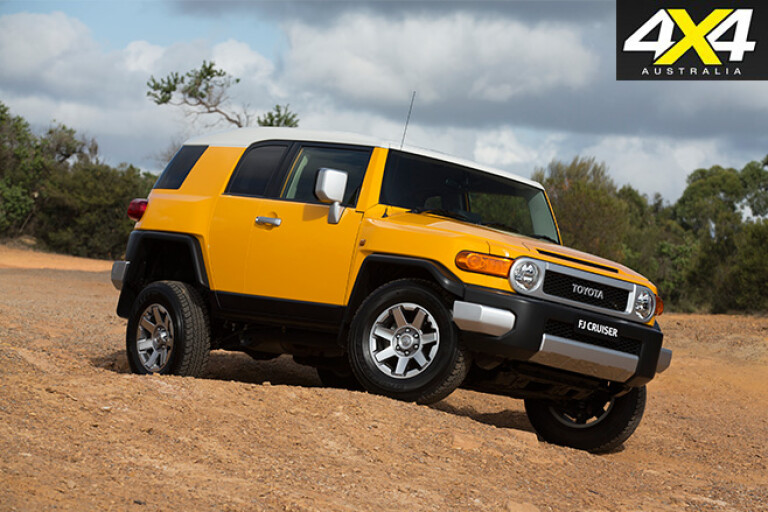
Toyota Land Cruiser FJ25
Year of Manufacture: 1958
Owner: Toyota Australia
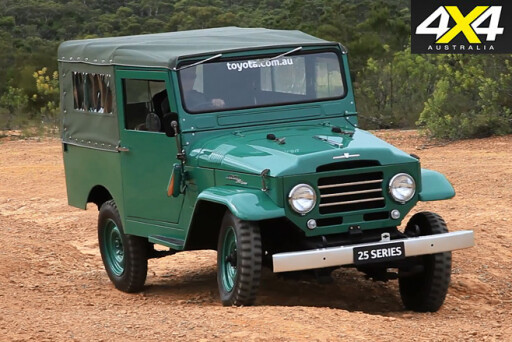 THE FJ25 started the Land Cruiser legend in Australia. Back in the late 1950s Sir Leslie Thiess purchased a handful of FJ25s for his construction company, which at the time was contracting the massive Snowy Mountains Hydro-electric Scheme. So impressed with the FJ25s was Thiess that he founded Thiess Toyota, with the aim of importing Toyota vehicles into Australia for commercial sale.
THE FJ25 started the Land Cruiser legend in Australia. Back in the late 1950s Sir Leslie Thiess purchased a handful of FJ25s for his construction company, which at the time was contracting the massive Snowy Mountains Hydro-electric Scheme. So impressed with the FJ25s was Thiess that he founded Thiess Toyota, with the aim of importing Toyota vehicles into Australia for commercial sale.
The FJ25 is powered by the 3.9-litre OHV straight-six ‘F’ petrol engine, driving through a four-speed gearbox. The FJ25 didn’t have low range, just selectable two- or four-wheel drive, but the extra-low first gear helped make good this shortcoming. Vacuum indicators, windscreen wipers and ultra-skinny bar-tread tyres are some of its notable features.
Toyota Australia acquired this vehicle in early 1970s and it subsequently underwent a restoration by company apprentices, before a full bare-metal respray in 2013. The vehicle makes regular appearances at 4x4 shows and the like and is well worth a close look if you ever come across it.
Toyota Land Cruiser FJ40
Year of Manufacture: 1979
Owners: Andrew Boyd and Mark Willock
 THE FJ40 is an iconic model in the 40 Series range. The 40 Series established Toyota’s reputation as a manufacturer of quality 4x4s and it effectively ended the then-market-dominance of Land Rover.
THE FJ40 is an iconic model in the 40 Series range. The 40 Series established Toyota’s reputation as a manufacturer of quality 4x4s and it effectively ended the then-market-dominance of Land Rover.
Introduced in 1960, the 40 Series would remain in production for the next 24 years. It brought dual-range 4x4 as well as comfort and convenience features rarely seen in 4x4s of the day. More importantly, it introduced changes in production processes that meant a better-quality vehicle could be produced more quickly and at lower cost compared to the 20 Series.
This particular late-model FJ40, built in July 1979, has the 4.2-litre 2F petrol six with a four-speed gearbox and is in immaculate factory-stock condition. Purchased two years ago by its current (and third owners), it’s been on display at Sydney City Toyota’s showroom ever since.
Toyota Land Cruiser BJ42 LX
Year of Manufacture: 1984
Owner: Daniel Ragusi
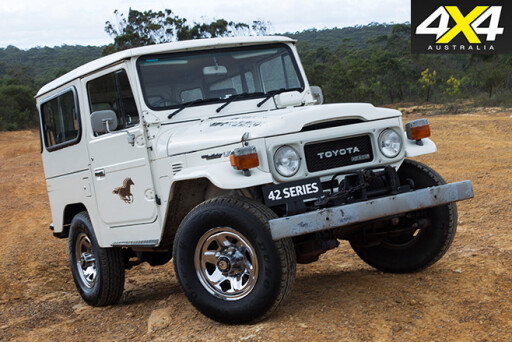 THE vast 40 Series range came with petrol or diesel engines, three different wheelbases and various body styles.
THE vast 40 Series range came with petrol or diesel engines, three different wheelbases and various body styles.
Here we have a very late model (1984) BJ42 in LX spec, which was the deluxe model of the 40 Series range, with features including cloth trim, air-conditioning and power steering.
Being a BJ it’s powered by a diesel engine, namely the 3.4-litre four-cylinder 3B. Unusually it has a five-speed manual, where most of the 40s – except the early three-speed models – had a four-speed ’box. And, as it’s a 42, it utilises a short wheelbase (like the 40 and 41).
In Australia, diesels first appeared in the 40 Series in the late 70s, and they brought better fuel economy than the F and 2F petrol engines at the expense of performance. This particular example was purchased from the second owner in Melbourne around eight years ago.
Toyota Land Cruiser HJ47 Troopcarrier
Year of Manufacture: 1984
Owner: Daniel Ragusi
 LAND Cruiser 40s built on the long wheelbase chassis were designated either 45 or 47. What we have here is a HJ47, which means it’s a long-wheelbase, 11-seat Troopcarrier with the 4.0-litre 2H six-cylinder diesel and four-speed gearbox. The two four-person rear seats run along the sides of the cabin, rather than across the cabin, hence the Troopcarrier designation.
LAND Cruiser 40s built on the long wheelbase chassis were designated either 45 or 47. What we have here is a HJ47, which means it’s a long-wheelbase, 11-seat Troopcarrier with the 4.0-litre 2H six-cylinder diesel and four-speed gearbox. The two four-person rear seats run along the sides of the cabin, rather than across the cabin, hence the Troopcarrier designation.
The 40 came with a number of different diesels including the 3.0-litre B; the 3.2-litre 2B and 3.4-litre 3B four-cylinder engines; and the 3.6-litre H and 4.0-litre 2H six-cylinder engines. Long-wheelbase models only came with a six-cylinder engine.
This very tidy example is from the last year of 40 Series production in 1984, and it was purchased from its original owner in Melbourne around ten years ago.
Toyota Land Cruiser FJ55
Year of Manufacture: 1967
Owner: Luke Casaceli
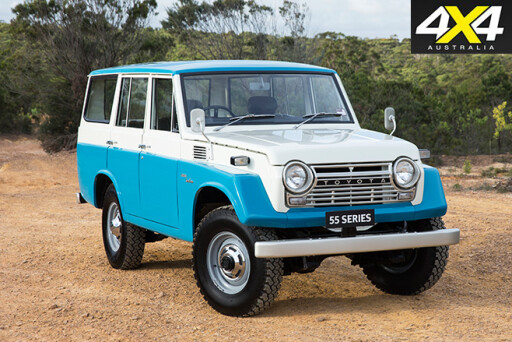 THE FJ55 grew off the back of the 40 Series and was Toyota’s first move towards a recreational family 4x4 and away from commercial 4x4s. It was only offered in petrol – initially the F engine and later the 2F – and was built on a wheelbase between the medium and long 40s.
THE FJ55 grew off the back of the 40 Series and was Toyota’s first move towards a recreational family 4x4 and away from commercial 4x4s. It was only offered in petrol – initially the F engine and later the 2F – and was built on a wheelbase between the medium and long 40s.
This beautiful example comes from the first year of FJ55 production – 1967 – and has the 3.9-litre six-cylinder F petrol engine, three-speed gearbox and dual-range 4x4. It has undergone a complete restoration since being rescued from a paddock in central NSW in 2013, after serving its life as a farm vehicle. Despite this it still ran – albeit roughly – and was relatively rust-free.
During restoration it was found to have the original engine and gearbox both requiring just a good service to bring them back to operational condition. The owner also sourced some five or six other FJ55s to complete the restoration, including the fitting of factory-original three-row seating.
Toyota Land Cruiser HJ61 Sahara
Year of Manufacture: 1988
Owner: Walter Ragusi
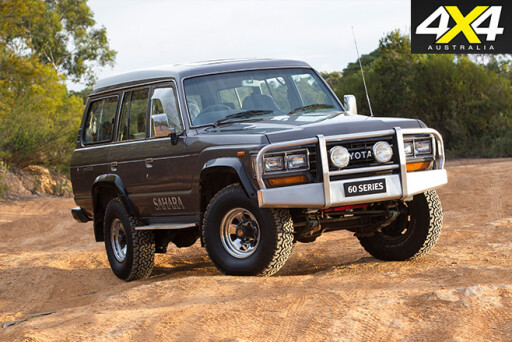 THE 60 Series replaced the 55 in 1980 and lasted ten years, eventually being replaced by the 80 Series.
THE 60 Series replaced the 55 in 1980 and lasted ten years, eventually being replaced by the 80 Series.
In Australia the 60 was initially offered with the 2F six-cylinder petrol engine, later to be replaced by the 3F. These models were designated FJ60.
The HJ60, with its six-cylinder 4.0-litre 2H diesel engine, came along soon after and in many ways proved to be the defining vehicle of the 60 Series range. A four-speed manual with both engines gave way to a five-speed in 1984.
What we have here is arguably the ultimate 60: a late-model (1988) HJ61 Sahara with the 12H-T six-cylinder turbo-diesel, widely regarded as one of the Toyota’s most durable 4x4 engines.
The HJ61 Sahara has eight cloth seats, front and rear air-conditioning, a high roof to accommodate the rear air-con, a sunroof and power steering. More significantly it has the optional four-speed automatic rather than the late-model five-speed manual – in fact, the 60 Series was the first Land Cruiser to be offered with an automatic gearbox. For the current (and third) owner, this HJ61 is a daily driver.
Toyota Land Cruiser BJ74 VX
Year of Manufacture: 1987
Owner: Glenn Austin
 THE 70 Series arrived in 1984 (1985 in Australia) as a replacement for the enormously successful 40 Series. Larger overall than the 40, the 70 retained front and rear leaf-sprung live axles and, like the 40, was primarily designed for commercial use – the main exception being the largely unloved coil-sprung Bundera.
THE 70 Series arrived in 1984 (1985 in Australia) as a replacement for the enormously successful 40 Series. Larger overall than the 40, the 70 retained front and rear leaf-sprung live axles and, like the 40, was primarily designed for commercial use – the main exception being the largely unloved coil-sprung Bundera.
In Australia the 70 came in a mind-boggling array of models with a vast array of engines. It also came with wagon, ute, cab-chassis and Troopcarrier bodies on three different wheelbases.
However, not all leaf-sprung 70s were aimed just at the commercial market, as this BJ74 demonstrates. This mid-wheelbase model has the well-regarded 13B-T 3.4-litre four-cylinder turbo-diesel backed by a four-speed automatic – the BJ74 being one of the few 70s to be offered with an auto.
It’s VX spec and has a removable FRP top, push-button transfer and central locking. It’s a nicely original and very tidy example purchased from its first owner two years ago, and it now has 311,000km on its engine and gearbox.
Toyota Land Cruiser VDJ78 Troopcarrier
Year of Manufacture: 2015
Owner: Toyota Australia
 WHAT started with the FJ25 – and brought to prominence with the FJ40 – has ended up here. This 78 Series Troopcarrier, along the 76 wagon and 79 utes in single- and double-cab variants, are the latest vehicles in a long line of commercial Land Cruisers.
WHAT started with the FJ25 – and brought to prominence with the FJ40 – has ended up here. This 78 Series Troopcarrier, along the 76 wagon and 79 utes in single- and double-cab variants, are the latest vehicles in a long line of commercial Land Cruisers.
Like all 70 Series models since 1999 it has coils springs in place of leaf springs for the front live axle and, like all 70 Series since 2007, it has the 1VD-FTV 4.5-litre V8 turbo-diesel backed by a five-speed manual. With its cavernous interior, front and rear live axles, high ground clearance, front and rear lockers, and 180-litre fuel capacity, it offers 4x4 and remote-area functionality no other showroom-stock 4x4 can match.

COMMENTS